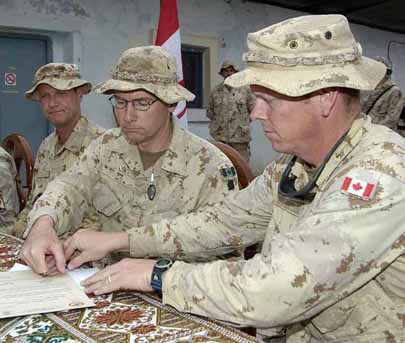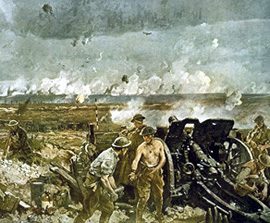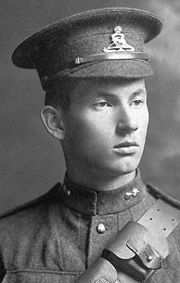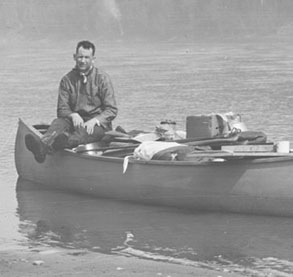Harold Innis at Vimy Ridge .. and Canada in Afghanistan
Apr 10th, 2007 | By Randall White | Category: Heritage NowThe Globe and Mail has reported that the 90th anniversary commemoration of the Canadian assault on Vimy Ridge in the First World War, under “the warm sun of northern France” on April 9, 2007, “was a thoroughly Canadian moment.” And the Queen, who lives in England, said: “Those who seek the foundations of Canada’s distinction will do well to begin here, at Vimy.”
But many Canadians, old and new, may be pardoned for believing that the Queen is not finally the best authority in such matters nowadays. They would include Harold Adams Innis (1894-1952), who is almost certainly as close as his country has yet come to a great historian. He was wounded at Vimy on July 7, 1917. Then he spent the rest of his life exploring the real “foundations of Canada’s distinction.” And he wrote almost nothing at all about Vimy Ridge.
Vimy and Afghanistan 2007?


Canadian military officials take command of the Kandahar Provincial Reconstruction Team in Afghanistan, February 134, 2006.
The deadly potential consequences of so much of the public rhetoric on display at the 90th anniversary of Vimy were sadly demonstrated by the eerily contemporaneous accidental news that “Canada suffered its worst day in battle since the Korean War as six soldiers were killed yesterday [April 8, 2007] and two injured by a roadside bomb in Afghanistan.”
This prompted various figures involved in the official ceremonies to draw parallels between the quite stupendous Canadian sacrifices at Vimy in the First World War and Afghanistan today – from the Queen to Canadian Prime Minister Stephen Harper to Canadian foreign minister Peter MacKay. According to Mr. MacKay, e.g., the “mission in Afghanistan is no less a cause than the freedom and democratic values soldiers fought for in the Great War … The Vimy memorial service today will pay tribute to those fallen heroes and in Afghanistan we see the willingness of Canadians in modern times to fight for those same sacred values … The Afghan people are no less deserving of our support and protection of their rights as were the people of France and occupied Europe during the First and Second World Wars.'”
 Closer students of world history than Mr. MacKay may find these assertions somewhat strange. To imagine that Canadians today see themselves as at war in Afghanistan in anything remotely like the senses that Canadians in the first half of the 20th century saw themselves as at war in the world at large, between 1914 and 1918, and 1939 and 1945, is only to show an appalling ignorance of and even disrespect for the real Canadian past. Mr. MacKay’s rhetoric only emulates the hyperbolic and overwrought comparisons between Saddam Hussein and Adolf Hitler, that helped mislead Canada’s colossal free and democratic neighbours in the USA into their current morass in Iraq.
Closer students of world history than Mr. MacKay may find these assertions somewhat strange. To imagine that Canadians today see themselves as at war in Afghanistan in anything remotely like the senses that Canadians in the first half of the 20th century saw themselves as at war in the world at large, between 1914 and 1918, and 1939 and 1945, is only to show an appalling ignorance of and even disrespect for the real Canadian past. Mr. MacKay’s rhetoric only emulates the hyperbolic and overwrought comparisons between Saddam Hussein and Adolf Hitler, that helped mislead Canada’s colossal free and democratic neighbours in the USA into their current morass in Iraq.
It is no doubt not quite right either to say that the conflicts in Iraq or Afghanistan today are just revivals of the discredited old colonial wars of Western imperialism. But there do seem to be a lot of people actually living in the Middle East at the moment who at least claim to see them that way – as virtually nobody living in France, or Germany, or Italy, or Japan, and so forth saw or even claimed to see in either the First or Second World Wars. And that is just one of several questions many Canadians still have about their country’s and their much-appreciated and valued brave soldiers’ future in Afghanistan. Of course all Canadians who die for their country achieve our everlasting gratitude and vast respect – because they have sacrificed their lives for the life of our free and democratic human community at large, and have thus done something much nobler than most of us will ever come close to. But that just makes it so much more important for we in the larger free and democratic community to ensure that the real-world objectives we are asking our brave soldiers to risk their lives for are achievable and make practical sense. Mr. MacKay’s kind of palpably inapt and even foolish historical comparisons are not reassuring.
Harold Innis at Vimy 1917


The Taking of Vimy Ridge, Easter Monday, 1917. Painted in 1919 by Richard Jack (1866—1952). Canadian War Museum.
It is also worth noting that, as old as many of them may have looked, none of the Canadians at the 90th anniversary commemoration at Vimy were actually there when the heroic assault took place in 1917. And that’s where the story of Harold Innis starts to become interesting. Because he was there. And it is also interesting to compare his experience with the official memories that are inevitably what figure in such things as 90th anniversary commemorations.
(What is, by the way, so important about the 90th anniversary of something anyway? It is not quite like the 100th anniversary – which in Vimy’s case will not come until 2017. The excuse here apparently is that the Vimy monument to the sacrifice of brave Canadians has just been lovingly refurbished. But that could have been suitably launched with much less fanfare and aggressive patriotic fervor than so many tentacles of the Canadian mass media have been showering upon us over the early days of April 2007.)
 An admirably concise summary of the official Ottawa story about Vimy Ridge appears on the federal government’s Canadian Heritage website: “In the spring of 1917, the Canadian Corps were tasked with the decisive recapture of Vimy Ridge. For the first time in the Great War, all 4 Canadian divisions were to fight together on the same battlefield. After extensive planning and training, 30,000 Canadians (drawn from all 9 provinces) attacked at dawn on the morning of Easter Monday (April 9), with rain, snow and sleet falling down. With the benefit of a heavy artillery barrage, they took the ridge by afternoon. With tenacity and unflinching bravery, the Canadians fought on and, 3 days later, the entire ridge was under Allied control. It was the most successful Allied advance on the Western Front to that date but at a terrible cost – 10,602 Canadians wounded and 3,598 killed. This “turning point battle” resulted in 4 Victoria Crosses being awarded and the cornerstone laid for Canada’s image of itself as a proud and confident nation as well as of its place in the world.”
An admirably concise summary of the official Ottawa story about Vimy Ridge appears on the federal government’s Canadian Heritage website: “In the spring of 1917, the Canadian Corps were tasked with the decisive recapture of Vimy Ridge. For the first time in the Great War, all 4 Canadian divisions were to fight together on the same battlefield. After extensive planning and training, 30,000 Canadians (drawn from all 9 provinces) attacked at dawn on the morning of Easter Monday (April 9), with rain, snow and sleet falling down. With the benefit of a heavy artillery barrage, they took the ridge by afternoon. With tenacity and unflinching bravery, the Canadians fought on and, 3 days later, the entire ridge was under Allied control. It was the most successful Allied advance on the Western Front to that date but at a terrible cost – 10,602 Canadians wounded and 3,598 killed. This “turning point battle” resulted in 4 Victoria Crosses being awarded and the cornerstone laid for Canada’s image of itself as a proud and confident nation as well as of its place in the world.”
All this fits nicely, of course, with the Queen’s official remark on April 9, 2007 in northern France: “Those who seek the foundations of Canada’s distinction will do well to begin here, at Vimy.” But it does not compare very well with the account of Vimy Ridge offered by the Canadian historian Donald Creighton, in a short biography of Harold Innis, published in 1957, five years after Innis’s ultimate death from prostate cancer in his late 50s.
 As Creighton tells Innis’s story: “On April 9 [1917], in the grey dawn of a spring morning, he waited just behind the Canadian line. The Ridge … rose mistily before him … then, at exactly half-past five o’clock, the whole long line of the Canadian guns, in appalling unison, opened up … For a time that seemed interminable, the world was filled with its hideous clamour … And then, at long last, the barrage lifted … The front-line German trench was taken … The advance swept forward to the German batteries; and gradually the enemy’s gunfire dwindled away to an occasional shell … And the day drew slowly toward nightfall, and the snow came softly down.”
As Creighton tells Innis’s story: “On April 9 [1917], in the grey dawn of a spring morning, he waited just behind the Canadian line. The Ridge … rose mistily before him … then, at exactly half-past five o’clock, the whole long line of the Canadian guns, in appalling unison, opened up … For a time that seemed interminable, the world was filled with its hideous clamour … And then, at long last, the barrage lifted … The front-line German trench was taken … The advance swept forward to the German batteries; and gradually the enemy’s gunfire dwindled away to an occasional shell … And the day drew slowly toward nightfall, and the snow came softly down.”
Innis managed to survive the first few days of the Canadian assault at Vimy altogether intact. But as Creighton explains, it would take much longer to seriously secure the territory: “For nearly three months the fighting about the Ridge continued. The Canadians only gradually consolidated their position … and Innis’s battery was moved several times before it finally settled down below the Ridge and close to the town of Vimy itself. The Germans counter-attacked; there were periods of intense shelling … But gradually, by very slow degrees, it began to be apparent that the excitement about the Ridge … was dying down.”
 Then: “On July 7 – almost exactly three months after the first attack on Vimy Ridge – Innis” and some others from “his battery started off to make their nightly observations from the old German gun-pits near the top of the Ridge.” Suddenly a German battery in the distance began shelling the position, “picking out groups of climbing Canadians wherever they could be found.” Innis was already hurrying when: “Something thudded into his leg. He was knocked down. Blood began pouring out at his knee. And then, in the midst of his overwhelming weakness, he became aware that his companions had got out their Red Cross tackle and were binding up the wound.” After further vague adventures “there was an ambulance, and a train, and then the long corridors and large rooms of something that must be a base hospital.”
Then: “On July 7 – almost exactly three months after the first attack on Vimy Ridge – Innis” and some others from “his battery started off to make their nightly observations from the old German gun-pits near the top of the Ridge.” Suddenly a German battery in the distance began shelling the position, “picking out groups of climbing Canadians wherever they could be found.” Innis was already hurrying when: “Something thudded into his leg. He was knocked down. Blood began pouring out at his knee. And then, in the midst of his overwhelming weakness, he became aware that his companions had got out their Red Cross tackle and were binding up the wound.” After further vague adventures “there was an ambulance, and a train, and then the long corridors and large rooms of something that must be a base hospital.”
A few days later he found himself at Endell Street Hospital in London, England. Two operations were required to repair the shell wound to his leg. By the end of October 1917 he was “moved again to the large Canadian General Hospital at Basingbroke” in England. He “walked laboriously and only with the aid of a stick; and the likelihood of his return to Canada grew greater and greater.” But it was not until March 10, 1918 that he boarded a ship back home, and it did not reach Quebec City until March 29. The next day “late that afternoon, moving slowly … and with the aid of his inevitable stick, he climbed off the train at South Norwich” in the southwestern Ontario farm country, “and was clasped in his mother’s arms.”
The real “foundations of Canada’s distinction”

Harold Innis’s quite religious old Ontario family farm parents had wanted him to become a Baptist clergyman. Before enlisting for the Great War in Europe he had earned his BA at the Baptist institution of McMaster University, then on Bloor Street in Toronto, with some such destiny still vaguely in the air. Once he returned from the war a different kind of future jelled in his mind. He finally went off to do a PhD in economics at the University of Chicago, with a thesis on the history of the Canadian Pacific Railway. By the fall of 1920 he had started a teaching job at the University of Toronto, where he would work for the rest of his life.
Innis never subsequently delved into his First World War experience at Vimy in any depth – beyond an MA thesis on “The Returned Soldier,” completed for McMaster University in 1918, just before he went to Chicago. But it is not too much to say that the rest of his life was consumed by an ongoing exploration of the “foundations of Canada’s distinction,” in what he came to see as its already surprisingly deep and intriguing history. And this exploration may have in some degree been inspired by his own experience of Vimy Ridge, as what the present-day Canadian Heritage website from Ottawa calls “the cornerstone laid for Canada’s image of itself as a proud and confident nation as well as of its place in the world.”
 But Innis’s explorations of “Canada’s distinction” never assumed anything like the proposition that Canada was a nation born in the quite appalling blood and carnage of its young men on Vimy Ridge in the spring and summer of 1917 – and in the First World War at large. (Though if it were, the country no doubt qualified. As just the most obvious way of dramatizing the point, estimates of Canadians killed in the Great War of 1914-1918 on one relevant website in cyberspace today, e.g., range from 55,000 to 62,820. Comparable estimates for the USA, which was, it is also true, not involved for at all as long, range from 50,585 to 126,000. And Canada in 1920 had about 8.5 million people, compared with more than 106 million in the USA.)
But Innis’s explorations of “Canada’s distinction” never assumed anything like the proposition that Canada was a nation born in the quite appalling blood and carnage of its young men on Vimy Ridge in the spring and summer of 1917 – and in the First World War at large. (Though if it were, the country no doubt qualified. As just the most obvious way of dramatizing the point, estimates of Canadians killed in the Great War of 1914-1918 on one relevant website in cyberspace today, e.g., range from 55,000 to 62,820. Comparable estimates for the USA, which was, it is also true, not involved for at all as long, range from 50,585 to 126,000. And Canada in 1920 had about 8.5 million people, compared with more than 106 million in the USA.)
In books like his great (or at least near-great) and still surprisingly relevant local classic of 1930, The Fur Trade in Canada: An Introduction to Canadian Economic History, Innis traced Canada’s distinction to the long struggles of what are now the diverse Canadian people, who start with the aboriginal peoples of Canada and end with the most recent new citizens from around the global village, building a modern free and democratic society in the unique rugged geography of “northern North America,” on the back of a great wealth of natural resources, and open-ended popular and entrepreneurial ambition, among people of different cultural backgrounds.
 What you finally get in Harold Innis’s mature view of Canadian distinction is something much like what you get in the Rt. Hon Pierre E. Trudeau’s foreword to his English paddling friend Eric Morse’s book of the late 1960s, Fur Trade Canoe Routes of Canada: Then and Now: “In the past the teaching of history in our schools has been dominated by traditions inherited from Europe. On that continent history has been filled with battles, and the lives of national heroes. In Canada we have had few decisive battles and not many dominant leaders. Much more important to our history has been the struggle of nameless Canadians to improve their lives in our often hostile environment. This struggle has produced its share of adventure and heroism.”
What you finally get in Harold Innis’s mature view of Canadian distinction is something much like what you get in the Rt. Hon Pierre E. Trudeau’s foreword to his English paddling friend Eric Morse’s book of the late 1960s, Fur Trade Canoe Routes of Canada: Then and Now: “In the past the teaching of history in our schools has been dominated by traditions inherited from Europe. On that continent history has been filled with battles, and the lives of national heroes. In Canada we have had few decisive battles and not many dominant leaders. Much more important to our history has been the struggle of nameless Canadians to improve their lives in our often hostile environment. This struggle has produced its share of adventure and heroism.”
 For those Canadians who still believe that this is the real forward-looking view of Canada’s distinction and the Canadian future, the Vimy Ridge binge that so much of the local media went on over the Easter holidays of 2007 has just seemed an indisputably sad but ultimately annoying reminder of a local colonial past that for some strange reasons is still too reluctant to grow up at last and fade away nobly as it should. The federal Liberals may have planned the 90th anniversary commemoration of Vimy Ridge way back when. But at the moment it all seems to feed a bit too nicely into the almost creepy new neo-militarism, which is probably the most unfortunate and distressing (and obsolete) thing that Stephen Harper and “Canada’s new government” have brought to Ottawa over the past year and few months. And in the end it seems not at all historically accurate to say that most of the brave Canadian soldiers who so nobly sacrificed their lives at Vimy Ridge in 1917 died to secure a future in which still more appalling numbers of young men (to say nothing of young women) can die on bloody battlefields far away from their homes. The Great War was supposed to be “the war to end all wars.” The Canadians at Vimy died to secure the kind of Canada that Harold Innis and so many other brave young people came home to try to help create.
For those Canadians who still believe that this is the real forward-looking view of Canada’s distinction and the Canadian future, the Vimy Ridge binge that so much of the local media went on over the Easter holidays of 2007 has just seemed an indisputably sad but ultimately annoying reminder of a local colonial past that for some strange reasons is still too reluctant to grow up at last and fade away nobly as it should. The federal Liberals may have planned the 90th anniversary commemoration of Vimy Ridge way back when. But at the moment it all seems to feed a bit too nicely into the almost creepy new neo-militarism, which is probably the most unfortunate and distressing (and obsolete) thing that Stephen Harper and “Canada’s new government” have brought to Ottawa over the past year and few months. And in the end it seems not at all historically accurate to say that most of the brave Canadian soldiers who so nobly sacrificed their lives at Vimy Ridge in 1917 died to secure a future in which still more appalling numbers of young men (to say nothing of young women) can die on bloody battlefields far away from their homes. The Great War was supposed to be “the war to end all wars.” The Canadians at Vimy died to secure the kind of Canada that Harold Innis and so many other brave young people came home to try to help create.
The un-referenced quotations on Innis’s time at Vimy Ridge here are taken from Donald Creighton, Harold Adams Innis: Portrait of a Scholar (Toronto: University of Toronto Press, 1957, 1978), 34-38.



